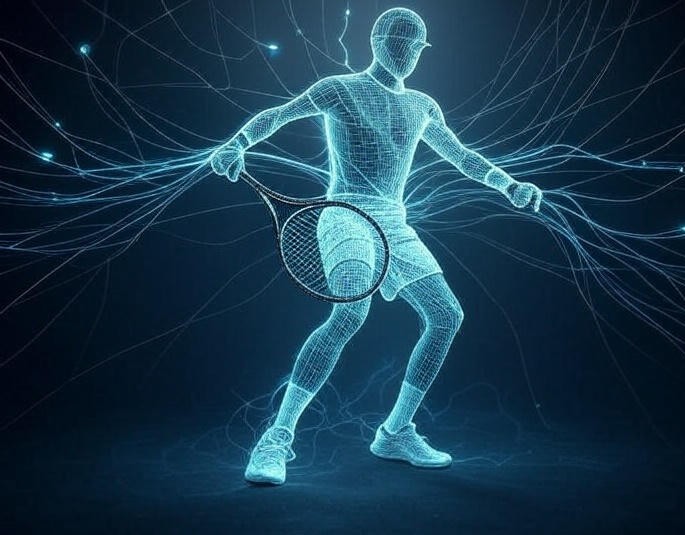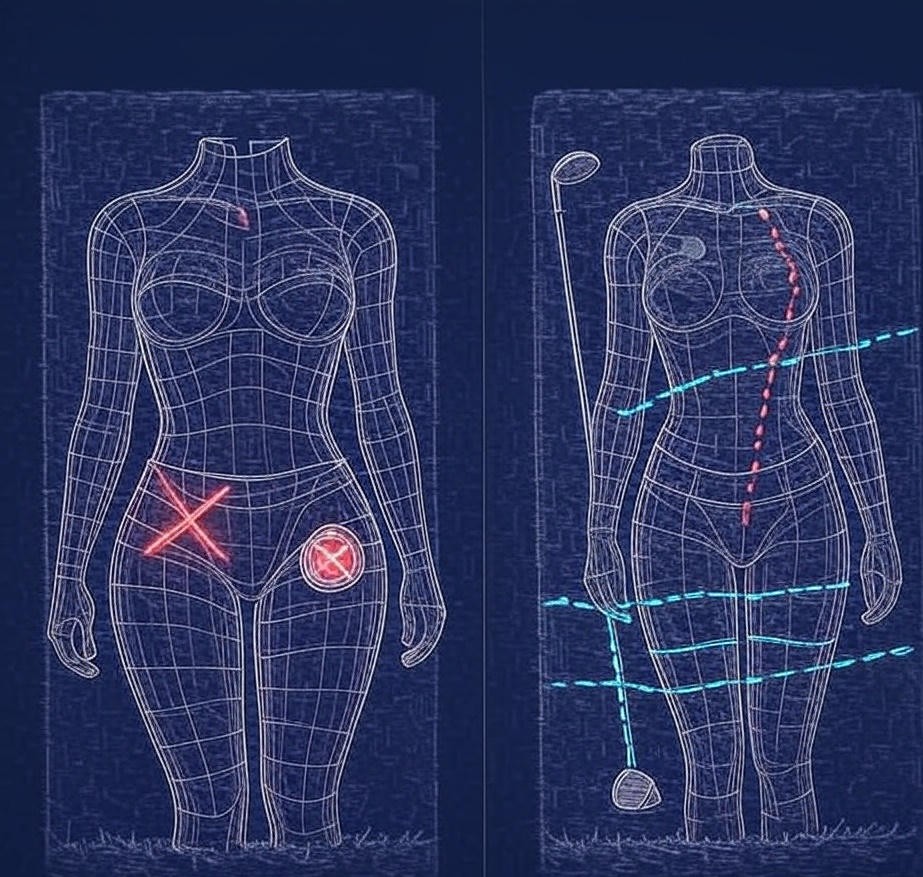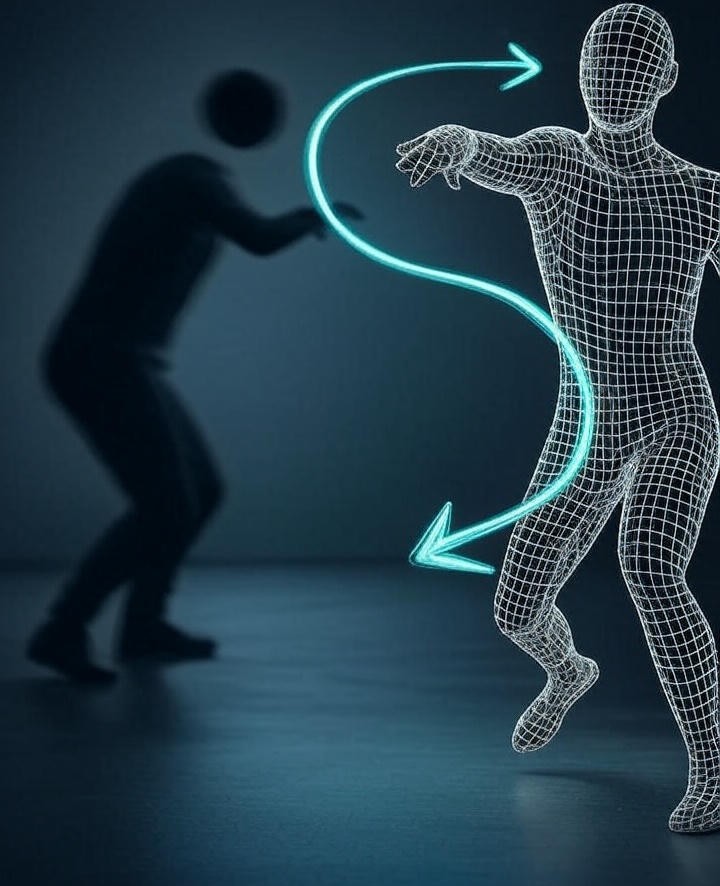Introduction: The Plateau of Disconnected Parts
Imagine a dedicated tennis player. For months, she’s been stuck. Her coach tells her she has all the pieces: a powerful serve, a solid backhand, and a deep understanding of strategy. She spends hours in the gym building strength, hours on the court drilling mechanics, and hours reviewing match footage. Yet, in critical moments, the system fails. The serve that was a weapon in practice becomes a liability under pressure. The clear strategic choice evaporates in a cloud of indecision.
Her frustration is palpable and deeply relatable. It’s the feeling of being a collection of high-performance parts that refuse to work together as a high-performance whole.
This athlete’s struggle highlights a fundamental, outdated approach to improvement. For generations, we’ve been taught to train in silos—to treat strength, skill, and strategy as separate pursuits. We believe that by improving each component in isolation, the whole will magically improve. But when we hit a plateau, it’s rarely because one part is faulty; it’s because the connections between the parts are broken.
Modern performance science offers a more powerful paradigm. It doesn't see an athlete as a collection of parts, but as a single, deeply integrated system. Your body is the engine, but your brain is the control center, and the feedback between them is the operating system that governs all of it. To achieve a true breakthrough in improving athletic performance, you cannot simply tune the engine. You must understand, and optimize, the entire system at once.
This guide is a map to that system. We will explore the three critical subsystems that define your potential: the adaptive wiring of your brain, the physical laws governing your body, and the data-driven feedback loops that bind them together. The path to your progress is now clear.

Part 1: The Control Center - Rewiring Your Brain for Skill
The most powerful component of the athletic system is the one you can’t see: the three pounds of neural tissue between your ears. For centuries, we believed the adult brain was a fixed, unchangeable machine. But a revolution in neuroscience has proven the opposite. Your brain is profoundly “plastic,” capable of radical reorganization and rewiring at any age.
The Brain That Changes Itself
Pioneering researchers like Dr. Norman Doidge have documented incredible cases of this neuroplasticity in action. In his work, he details how stroke patients, who had lost function in a limb, were able to regain movement by forcing their brains to find new neural pathways around the damaged areas. This was achieved through intense, repetitive, and highly focused practice. The key finding is monumental: concentrated thought and targeted action can physically change the brain’s structure and function.
This is the absolute foundation of motor learning principles. Every time you practice a skill, you are not just going through the motions; you are giving your brain a set of instructions for which circuits to strengthen and which to let go. The question is, how do you provide the right instructions?
The Power of Deliberate Practice
The answer lies in the work of Anders Ericsson, whose research on expert performers gave us the concept of Deliberate Practice. He found that greatness isn't born from innate talent or countless hours of mindless repetition, but from a specific method of training that involves several key elements:
- A Specific Goal: Not “get better at golf,” but “increase my hip rotation speed by 10% on my driver swing.”
- Intense Focus: All available mental energy is directed at that one specific goal.
- Immediate Feedback: A mechanism to know instantly whether you succeeded or failed in your goal for that single repetition.
This method works because it provides the brain’s control center with the clearest possible signal. Instead of a noisy, confusing broadcast of commands, it sends a single, high-definition instruction, over and over. This is the most efficient known way to harness neuroplasticity and drive meaningful, permanent change. The challenge, of course, remains the same: how do you identify the right specific goal to focus on?
Part 2: The Engine - Optimizing Your Physical Blueprint
If the brain is the control center, the body is the physical engine that executes its commands. But no two engines are built alike. Biomechanics and performance is the discipline of understanding this engine, but true mastery requires seeing it not just as a set of movements, but as a dynamic blueprint of capabilities and limitations that is unique to you.
Performance is governed by a duality: the functional capability of your body and the technical efficiency of your movement. Both have weaknesses, and both can be improved.
The Body’s Functional Weakness
Every athlete, from the weekend warrior to the world champion, has physical limitations. These might be tight hips that restrict rotation, a weak core that fails to stabilize the torso, or poor ankle mobility that disrupts balance. These are not skill problems; they are hardware problems. These functional weaknesses act as a governor on your performance, putting a hard ceiling on your potential regardless of how well you understand the technique. You cannot execute a movement your body is physically unprepared to do.
Identifying and fixing these foundational weaknesses is the first step toward building a more robust and resilient system. And when you do, a small miracle often happens: by improving your body's functional ability, you suddenly find yourself able to get into better positions more easily, making the act of learning the correct technique far less of a struggle.
The Technique’s Biomechanical Weakness
Separate from the body's physical capacity is the efficiency of the technique itself. This is the specific movement pattern you use for your sport. A biomechanically sound technique is one that produces the desired outcome with the least amount of wasted energy and stress on the body.
Even the world’s best athletes are constantly tinkering with their technique to find a new edge or fix a newly emerged flaw. These weaknesses are dynamic; they can change based on fatigue, pressure, or even small changes in your body's functional state. The goal is to identify the single biggest “energy leak” in your technical movement—the one flaw that, if fixed, would have the greatest positive impact on your performance.
This dual approach creates a powerful, compounding effect. Strengthening the body's functional blueprint makes it possible to refine the technique's biomechanical blueprint. Together, they create an engine that is not only more powerful but also more adaptable and less prone to injury.

Part 3: The Operating System - The Data-Driven Feedback Loop
This is where the entire athletic system comes together. The operating system is the flow of information—the feedback loop—that connects the brain’s intent with the body’s action. It is the mechanism that allows the system to learn, adapt, and refine itself. And for most of history, this operating system has been notoriously buggy.
The “Feel vs. Real” Dilemma
The most significant challenge in skill acquisition is the gap between what you feel you are doing and what you are really doing. This is the central problem that sports performance analysis is designed to solve. You might feel like your arm is straight, that your weight is forward, or that your swing is on plane. But intrinsic feedback—the information from your own senses—is often a poor judge of objective reality.
This is why extrinsic feedback is essential. This is information from an outside source: a coach’s eye, a video replay, or, most powerfully, objective data. Without accurate, external feedback, you can spend thousands of hours practicing and strengthening the neural pathways for the wrong movement, digging a deeper and deeper rut that becomes harder to escape. You are perfecting your flaws.

Closing the Loop with Intelligent Analytics
The purpose of performance technology is to provide an incorruptible, objective mirror. It closes the “feel vs. real” gap by translating your physical movements into hard data. A sophisticated intelligent analytics engine can take the complex, three-dimensional motion of a skill and break it down into its core biomechanical components.
This is not about overwhelming the athlete with a mountain of numbers. That would simply create the cognitive load catastrophe we discussed in Part 1. Instead, the goal of a truly intelligent sports performance analysis system is to provide a single, clear diagnosis. It sifts through all the noise to identify the one biomechanical flaw that is causing the biggest breakdown in the system.
This single data point is the key. It gives the brain’s control center the one clear, simple command it needs to begin the process of rewiring (“Focus on rotating your hips faster”). It gives the physical engine a specific, measurable goal. And it gives the operating system a way to track progress, repetition by repetition. The feedback loop is now closed, and the entire system can begin to upgrade itself in perfect sync.
Conclusion: A New Blueprint for Progress
We began with an athlete trapped on a plateau, frustrated by a system of disconnected parts. We have now mapped that system, revealing it to be a beautiful and intricate whole.
- The Control Center (Mind): Your brain is a dynamic network, ready to be rewired for any skill through the power of focused, deliberate practice.
- The Engine (Body): Your body is a unique physical blueprint with its own set of functional and technical weaknesses that can be identified and improved, creating a compounding effect on performance.
- The Operating System (Feedback): Data and intelligent analysis form the feedback loop that connects mind and body, providing the objective truth needed to ensure the right improvements are being made.
A breakthrough in performance is not achieved by addressing any one of these in isolation. It is achieved when the system works in concert: when a clear diagnosis from a sports performance analysis provides the single, focused goal the brain needs to start rewiring itself, and the body has a clear, measurable target to aim for.
This integrated approach represents a new era in human development. It replaces the anxiety of guesswork with the calm confidence of a scientific plan. The power to improve is not a mystery reserved for the “naturally talented.” It is a systematic process, and the technology now exists to guide you through it. Your potential is not a fixed limit; it is a system waiting to be optimized.
The path is now clear.
